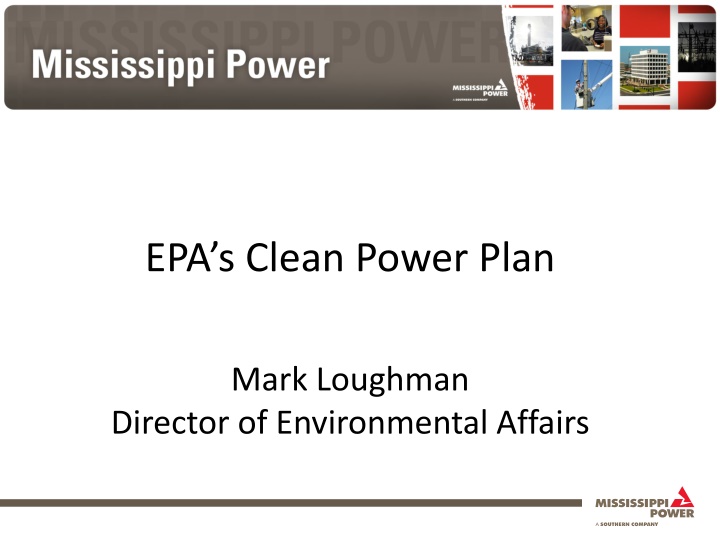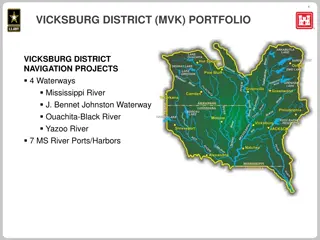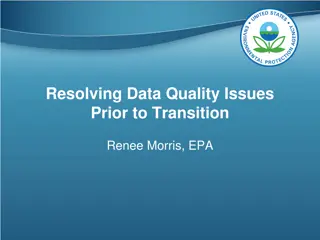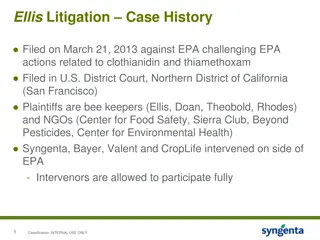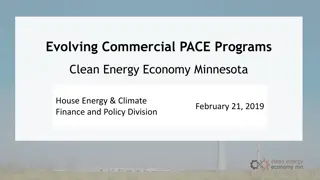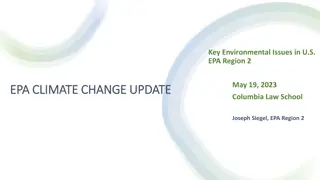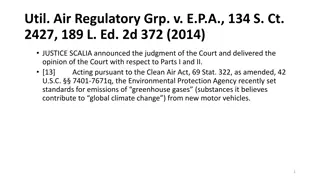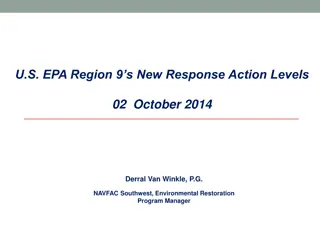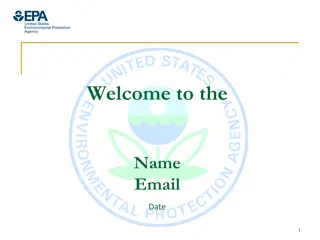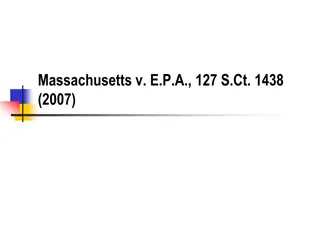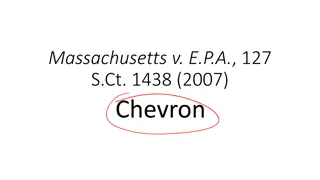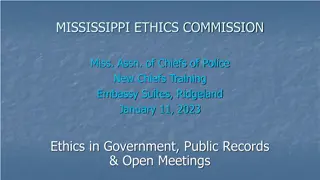Impacts of EPA's Clean Power Plan on Mississippi and Economic Development
Analysis of the Clean Power Plan by the EPA, focusing on its potential impacts in Mississippi. The plan's effects on energy, jobs, industry, and consumers are discussed, highlighting concerns such as economic development impacts, job losses, higher rates, and implications for Mississippi's electric system and energy diversity.
Download Presentation

Please find below an Image/Link to download the presentation.
The content on the website is provided AS IS for your information and personal use only. It may not be sold, licensed, or shared on other websites without obtaining consent from the author.If you encounter any issues during the download, it is possible that the publisher has removed the file from their server.
You are allowed to download the files provided on this website for personal or commercial use, subject to the condition that they are used lawfully. All files are the property of their respective owners.
The content on the website is provided AS IS for your information and personal use only. It may not be sold, licensed, or shared on other websites without obtaining consent from the author.
E N D
Presentation Transcript
EPAs Clean Power Plan Mark Loughman Director of Environmental Affairs
Population 2015 More people live inside the circle than outside
Global Energy Demand in Perspective 19199 267 57 156 207 880 517 1017 468 64 78 975 289 820 10 5 1389 376 371 1 3 24 98 167 Oil Natural Gas Coal Nuclear Hydro Renewables 111 16 562 166 2609 302 5 28 149 (MTOE)
Clean Power Plan Vast overreach of Clean Air Act 42% Little to no climate benefit reduction in emissions by 2030 Customers and Energy Industry Aggressive assumptions used to set targets Economic development impacts No Job losses economic dispatch Higher rates for customers
Mississippi Impacts MS target seems punitive Less than NSPS - inconsistent with intent of CAA 18 states final targets higher than 2012 CO2 emission rate Electric System Redesign Undermines MPSC authority Assumes retirement of existing MS coal fleet* Loss of fuel diversity would hurt consumers Possibly stranded assets Forced reliance on expensive renewables and EE
Mississippi Numbers Energy is the lifeblood of our country, the soul of our economic development. - Phil Bryant, Governor of Mississippi 3,400 Jobs $14+ Billion Energy security affordable, available, reliable, sustainable drives the energy mix and should be the goal of energy policy. - Dr. Scott Tinker, University of Texas 14 - 18% Estimated rate increase Income spent on energy 22%
Economic Impacts Reliance on out-of-state power Loss of competitiveness (manufacturing flight) Most expensive environmental regulation ever proposed on the industry Estimated U.S. compliance costs $423 billion by 2030 Estimated U.S. electricity rate increases 12-17% Job losses estimated at 224,000 per year Especially hard on middle- and low-income families
The Bottom Line Costs will increase if finalized Enormous federal overreach by EPA into states authority Unworkable in its current form Does not serve customers interests Higher electricity rates Impaired reliability EPA should withdraw the proposal and re-propose guidelines consistent with the Clean Air Act
Proposed Implementation Timeline 2015 2016 2017 2018 2019 2020 State submits negative declaration by June 30, 2016 State submits negative declaration EPA publishes FR notice State submits complete implementation plan by June 30, 2016 EPA reviews plan and publishes final decision within 12 months on approval/disapproval by June 30, 2016 State submits plan Emission Guideline Promulgation Compliance period begins State submits initial plan by June 30, 2016 and request 1-year extension 2020 June1, 2015 EPA reviews plan and publishes final decision within 12 months on approval/disapproval by June 30, 2016 State submits initial plan and request for 1 year extension EPA reviews initial plan and determinesif extensionis warranted by June 30, 2017 State submits plan State submits initial multi-state plan by June 30, 2016 and request 2-year extension By June 30, 2016 State submits initial multi state plan and request for 2 year extension EPA reviews plan and publishes final decision within 12 months on approval/disapproval EPA reviews initial plan and determinesif extensionis by June 30, 2017 State submits progress report of plan by June 30, 2018 States submits multi state plan EPA reviews initial plan and determinesif extensionis warranted warranted
